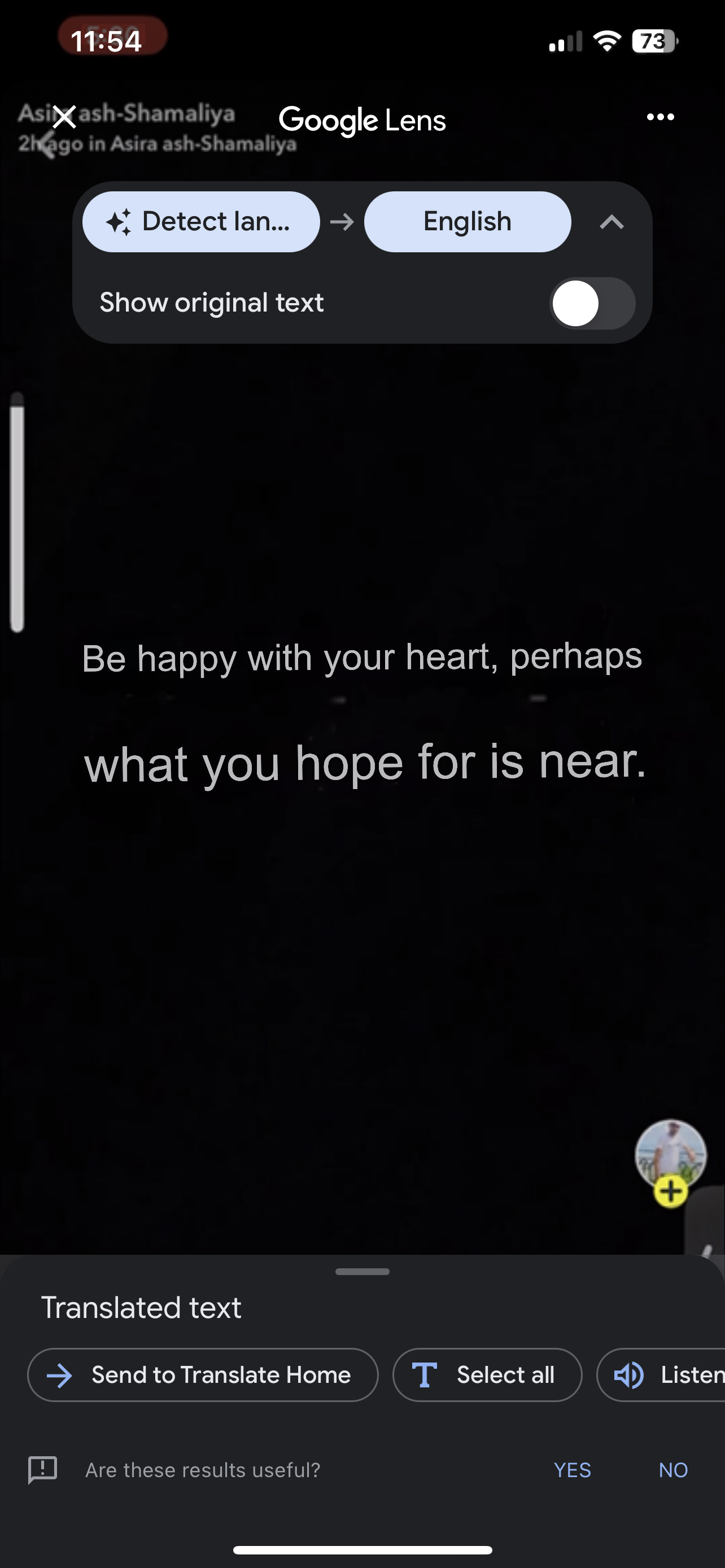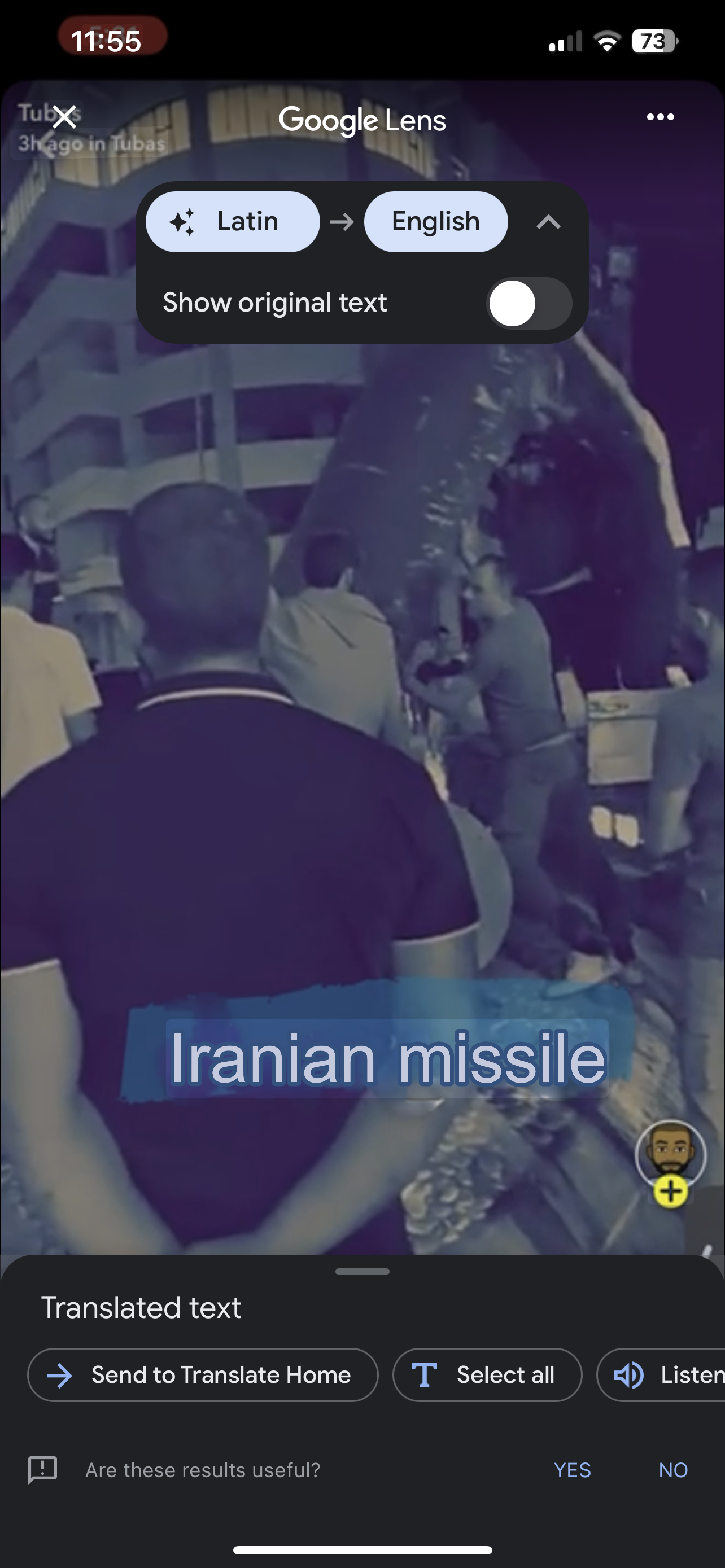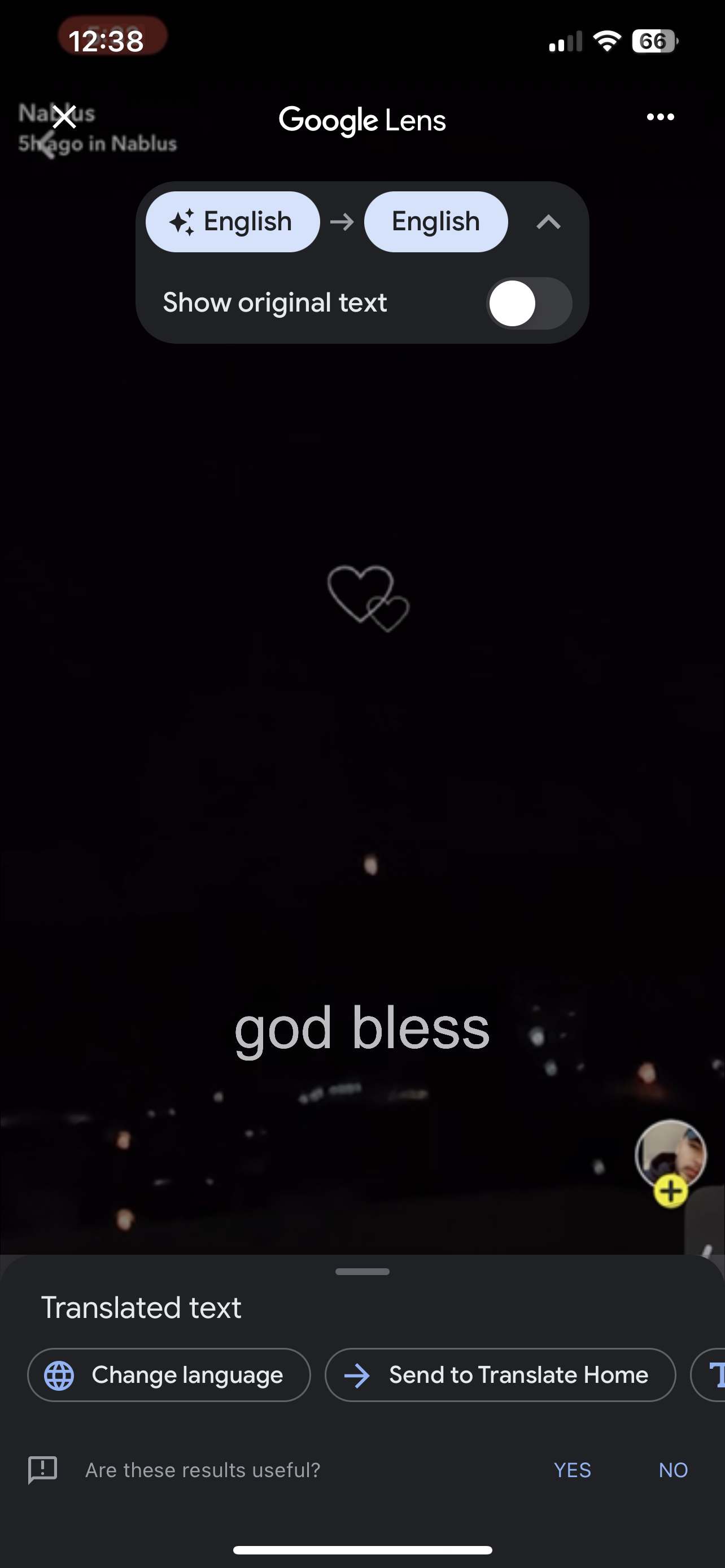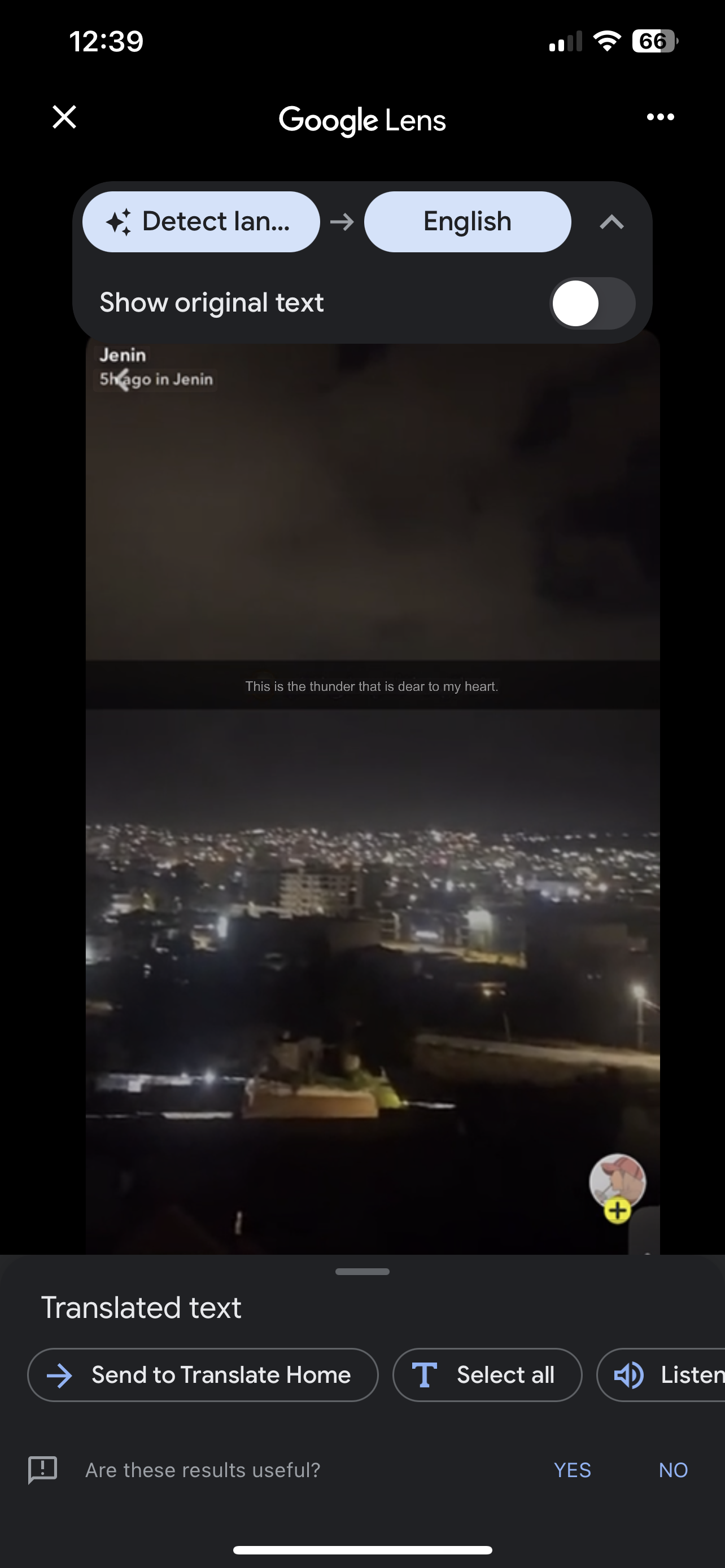A mixture of propaganda, curiosity, and celebration defined the local response to the Iranian missile strike on Israel.
This ephemeral content was posted to Snap Map Stories during and immediately after the air strikes. After the most recent attack began, the first entry for the area, marked off as the northern West Bank and Eastern Israel, was a black screen with Arabic writing.
Translated using Google Translate, it reads, “Be happy with your hearts, perhaps what you hope for is near.”

Several videos show a crowd of men lifting and moving what appears to be part of a missile that presumably landed on the town of Tubas.
One video of the men includes a string of laughing face emojis. Another video says, “Iranian missile.”

Tubas is a city in the West Bank. However, content from this area and other Palestinian areas appears alongside content from Israel when checking Snap Map Stories. It is unclear why Iranian missiles would have fallen on Tubas, given the fact that they were presumably not intended for the Palestinian Iran supporters.

A propaganda video posted shows a Volkswagen in front of a waving Palestinian flag. It is translated as saying, “We eat dirt if they are hungry, and do not leave. Here we have a past, present, and future.”

Locals’ extemporaneous reactions were similar despite missiles falling on their villages or flying overhead. With a heart sticker, one user wrote, “God bless.”

Another, “This is the thunder that is dear to my heart.”
One Burqin poster said, “It’s the sounds of war,” alongside a fire emoji and an upside-down red triangle.
Other videos showed missiles raining down as the Islamic call to prayer rang out in Asira Ash Shamaliya.
The Dallas Express did not see any Israeli reactions that could be clearly distinguished from noticeable Palestinian reactions on Snapchat. However, that does not mean Israelis were not reacting.
Instead, Snap Map Stories only aggregates location-based stories from Snap Chat users who choose to make their posts viewable to the world rather than just their friends and followers in their network. Therefore, it is likely that a greater number of reactions by both Israelis and Palestinians were shared but not viewable by The Dallas Express.
Often, content cannot be distinguished when no language appears on the screen and the location is not clearly stated, so there is some degree of blurring between Israeli and Palestinian reactions.
Moreover, once a location is selected and all videos from that area are watched, the social media platform will begin toggling through the surrounding area, showing videos that sometimes hop across international boundaries when places like Israel, the West Bank, and Lebanon are close together. This makes it more difficult to distinguish between who is posting, including where and when, as it is not indicated in the video.
Further, Snapchat’s location indicator occasionally rounds up to the nearest municipality or geographic site, even if someone is not there. As such, it only gives an imperfect ballpark estimate of where someone is rather than a user’s exact location. Therefore, someone could be on the Israeli side of the border, but Snapchat would register them as being in the nearest West Bank village.
DX did check Tel Aviv, the nearest Israeli city with a significant proportion of users posting to Snap Maps at the time of the attacks, but did not find any relevant content to the strikes.
Notably, there was a level of banal humanity during the attacks.
While missiles rained down and propaganda went up, DX observed one woman bragging about her new toe nail polish and another man grooming a horse in a small stable. Another account posted an ad for affordable apartments.
The Iranian missile strike on Israel is the latest escalation in a war that began on October 7th, 2023, when the Hamas terror group launched an attack on the Jewish state from Gaza.
There have been several instances of escalation in recent weeks as Israel has turned its sights on the Iranian-backed terror group Hezbollah in Lebanon. The Israelis were widely reported to have detonated a series of pagers carried by Hezbollah leaders before launching airstrikes in Lebanon.
This action was met with the most recent missile strike from Iran. Iran is reported to have launched around 200 missiles at the small Mediterranean nation; however, an official death toll has not yet been reported.

